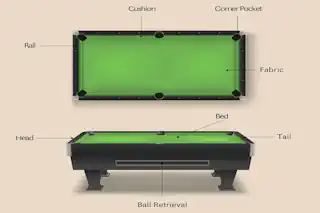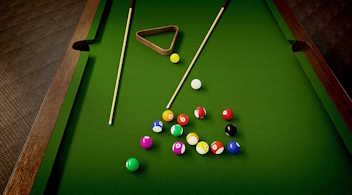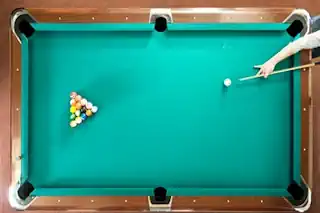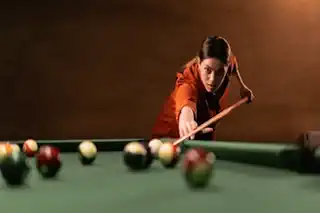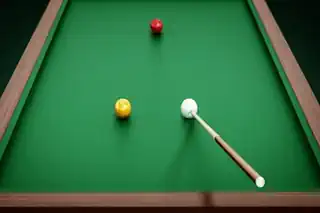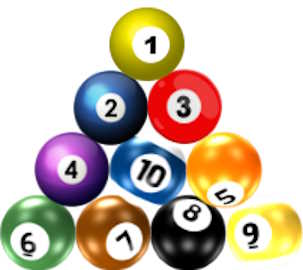The Ultimate Beginner’s Guide to Snooker
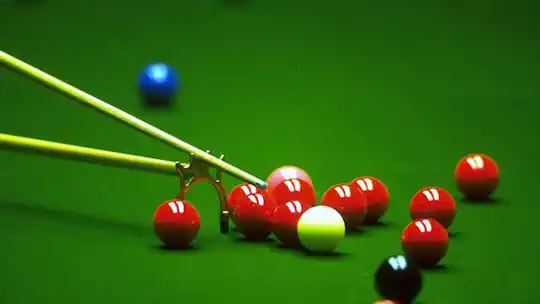
“Billiards and pool, are as old as they are captivating; they’ve stood the test of time, entertaining crowds and competitors for centuries. Where the cue sports are concerned, snooker reigns as the English favorite, with a history that spans well over a century. For those just entering the world of the green slate, the game can appear as intricate as the table it’s played on. Fear not, for this detailed guide is your gateway to the graceful yet tactical world of snooker.
A Little About Snooker
Brief History
Snooker sprang to life in the latter half of the 19th century, evolving from English the Billiards game, when someone added a new twist—restricting the player to potting the balls in a set order. Since then, the game has grown into a global social and professional pastime, with personalities like Ronnie O’Sullivan thrilling audiences with their mastery of the cue.
How Snooker Differs
In essence, snooker is an offspring of billiards with its own quirks. While it shares the green cloth and the cues, snooker’s most identifiable feature is size. The primary difference between billiards pool and snooker—the billiards pool and snooker’ table is significantly larger. The game demands a meticulous touch and strategic foresight as players maneuver around 21 balls (15 reds and 6 others) to pocket points.
Setting Up the Game
Master the initial setup to frame your snooker session for success.
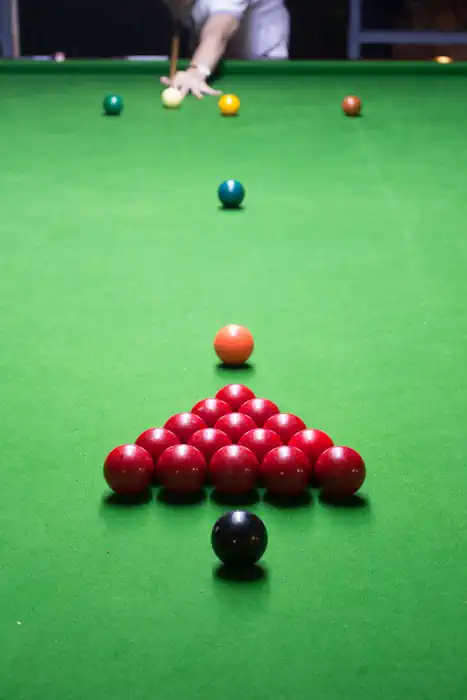
The Pool Tables
Snooker is played on massive twelve foot tables with six pockets like a billiard table. Each pocket is a destination and a deterrent, testing your precision and power. Understand the table’s layout—a task made complex by its size and the placement of the snooker balls.
Placement of the Pool Balls
Every game of snooker commences with a singular objective—to arrange the coloured balls together in their precise positions. Understanding this arrangement is the first step in taking control of the game. The object balls are the same size as standard billiard balls including a white cue ball, 15 red balls and 6 other balls each with a unique color and numeric value. The pyramid of red balls in close proximity to the pink, black, brown, blue, and green balls requires not just placement but an eye for pattern and strategy.
The Rules of Play
Playing by the snooker rules is crucial in any sport. Develop a solid foundation by understanding snooker’s fundamental principles.
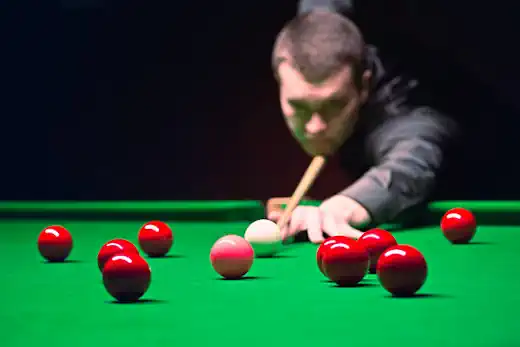
Basic Mechanics
The standard game of snooker operates on a nomination system where the incoming player must declare the color of the ball they intend to pot. Each ball holds a numerical value, except red balls which are each worth 1 point. The player who accumulates the most points through legally pocketing balls then clears the table of red and object balls before addressing the colored balls, each subsequently re-spotted until the final black ball.
Fouls and Penalties
A misstep in snooker can cost valuable points. Understand the nuances of what constitutes a foul—from missing the target to striking out of sequence, the list can be unforgiving. Penalties include receiving points, surrendering a spot on the table, striking the wrong ball, or even awarding ‘free three balls!’ to the opposing player.
Scoring
Scoring in snooker is more than just arithmetic; it’s about opportunity. Learn the scoring system to understand the strategic value of each pocketed white ball, and how to use this to your advantage during play.
Holding the Cue Ball
Your own cue stick is an extension of you—mastering its handling is the key to unlocking precision on the table.
The Basic Grip
Whether you choose an open bridge or favor a closed one, the grip is the anchor of your control. Striking the perfect balance between a steady hand and fluent motion is essential.
A Steady Stance
Your feet should be shoulder-width apart, with your body aligned with the shot to maintain stability and balance your stroke.
Mastering Ball Contact
The sweet spot on colored ball of the cue ball is where your game begins. Each shot requires a calculated contact point to achieve your desired outcome.
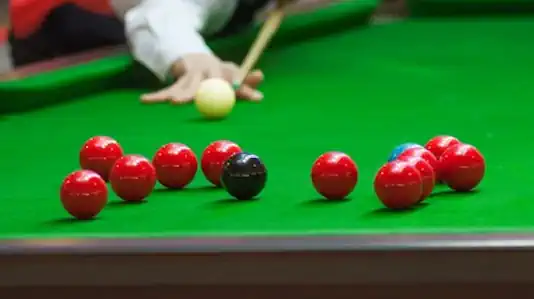
Hitting the Target
Practice precision by aiming consistently for the sweet spot. Develop muscle memory to ensure your intended path is as planned.
Applying Spin
Just as life isn’t lived in a straight line, most cues need a little seasoning. Understand how to apply side-spin to alter directions and swerve to execute subtle movements and sink impossible shots.
Selecting Your Shots
From the pot to the safety, snooker offers a variety of shot types, each with its time and tactical advantage.
The Simple Pot
Sometimes, the best shot is a straightforward one. Understand the importance of an open pot, honing your ability to pocket the red ball, with accuracy.
Defensive Play
Not every shot is about scoring points. Master the art of safety, using cushions and blocking tactics to outmaneuver your opponent while safeguarding your lead.
Long Distance Shots
The amount played on a table’s length can turn an easy win into a daunting challenge. Learn how to mitigate the risks of long-range pots to increase your score.
Playing a Game of Snooker
From the break to the black, every game is an intricate dance of strategy and skill. Learn to play with poise and purpose.
The Break
The first shot, the break, is often the decider of the match’s pace. Aim to pot a red and two yellow balls quickly establish a lead.
Strategy and Positioning
Success in snooker hinges on position. Plan several moves ahead to maintain control over the pool table itself, thinking not just about the shot at hand but your next move, and the one beyond that.
Mental Preparation
Keep calm and focused. Snooker is as much a mental contest as it is physical. Maintain your composure, and never lose sight of your endgame.
Common Pitfalls for Beginners
Billiards and snooker look like the same game but are played very differently. Mistakes are part of the game, but forewarned is forearmed. Address common blunders to ensure your game grows alongside your skills.
Overconfidence
Every missed shot is a lesson. Striking a balance between confidence and humility will strengthen your game over time. The angles on ten foot tables are significantly different on a twelve foot tables.
Poor Positioning of the White Cue Ball
Lack of planning can lead to poor position. Rethink your approach to shots by considering not just potting but table control. The break shot is not about power but planning and placement.
Rushed Play
Patience is a virtue in snooker. Resist the urge to play quickly and take the time to set up each shot properly. Hitting the intended ball is a must but positioning for the remaining object balls is equally as important. Missing the intended pocket turns the play over to your opponent. This is especially important when shooting at the colored balls.
Resources for Improvement
Community support and knowledge are your allies on the path to snooker prowess. Seek out books, videos, and local clubs to enhance your play.
Practice Sessions
Make the most of practice sessions by focusing on weak areas. Set achievable goals and track your progress to keep your game moving forward.
Coaching and Tutorials
Experience is the best teacher, and a knowledgeable coach can offer insights that might take years to acquire on your own. Attend coaching sessions or watch tutorials to refine your technique.
Joining a Community
Sharing the green with fellow snooker enthusiasts can inspire and challenge you. Joining a local snooker community can provide opportunities for friendly games, practice, and mentorship.
Conclusion
Becoming proficient in snooker is a journey. Each game, each shot, each error is a step toward mastery. The key to your advancement is not in reading this article, but in taking its wisdom to the table, learning through play, and persisting with the passion that every great snooker player has ignited within them. Remember, even the most celebrated snooker virtuosos started as beginners, just like you. Enjoy the game, and may your break be as auspicious as it is accurate.
Frequently Asked Questions (FAQs)
What is the best way to improve my aiming in snooker?
Improvement in aiming comes with practice and patience. Focusing on the basics, such as ensuring a consistent and stable stance and practicing your grip, can significantly enhance your precision. Regularly practicing aiming drills and using techniques like the ghost ball method could also be beneficial.
How often should I practice snooker to see improvement?
The frequency of practice depends on your goals and schedule, but consistency is key. Even short, focused sessions several times a week can lead to noticeable improvements over time. Aim for quality and consistency over quantity.
Can watching professional snooker matches help me improve my game?
Absolutely! Observing professionals play can provide insights into strategy, shot selection, and positioning. It’s also a great way to learn by observing the calmness and focus they maintain under pressure, which is crucial for mental preparation in snooker.
How important is the mental aspect in snooker?
The mental aspect of snooker is incredibly important. Staying focused, maintaining composure during the game, and thinking several shots ahead are key skills. Developing a routine before shots and learning to handle pressure are also vital components of a strong mental game.
What should I do if I hit a plateau in my snooker skills?
Hitting a plateau is a common experience. When this happens, consider focusing on a different aspect of the game, such as improving your safety play or mastering spin. Taking lessons from a coach can provide new perspectives and techniques to incorporate into your practice. Sometimes, even a short break can reinvigorate your passion and approach to the game. Changing the cue sticks can also change the feel and energize your play.
How can I find a coach or a local snooker community?
Look for local, snooker tables in clubs or pool halls; these are typically gathering spots for enthusiasts and often offer coaching services. Additionally, online forums and social media groups are excellent resources for connecting with local players and finding coaches or tutorials. This is a unique pool game so finding a coach may take a little time but it will definitely be worth the effort.
